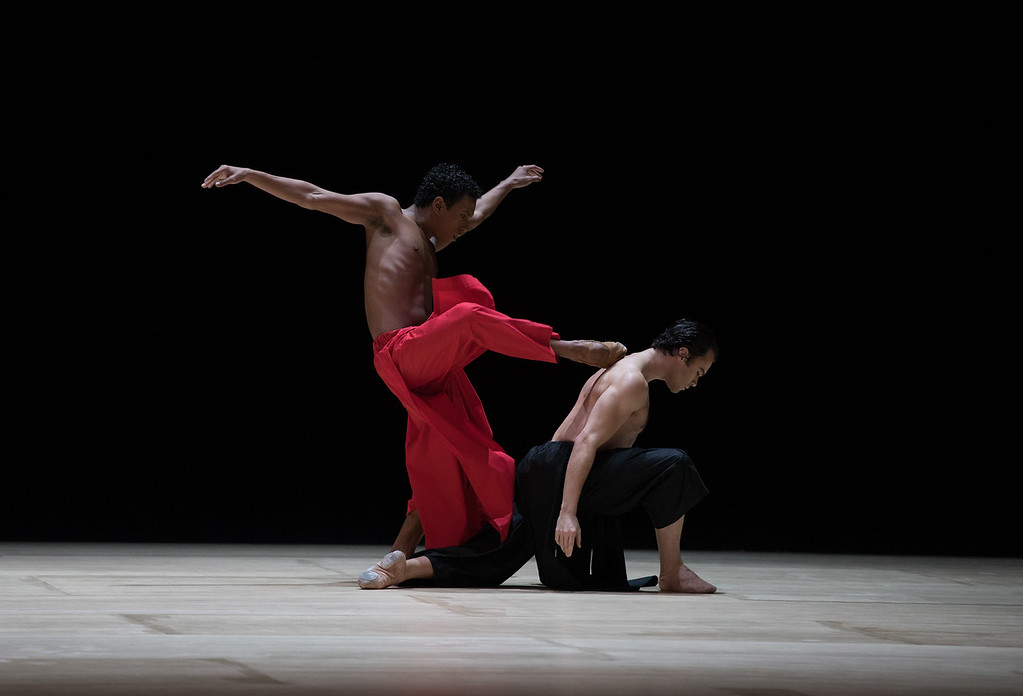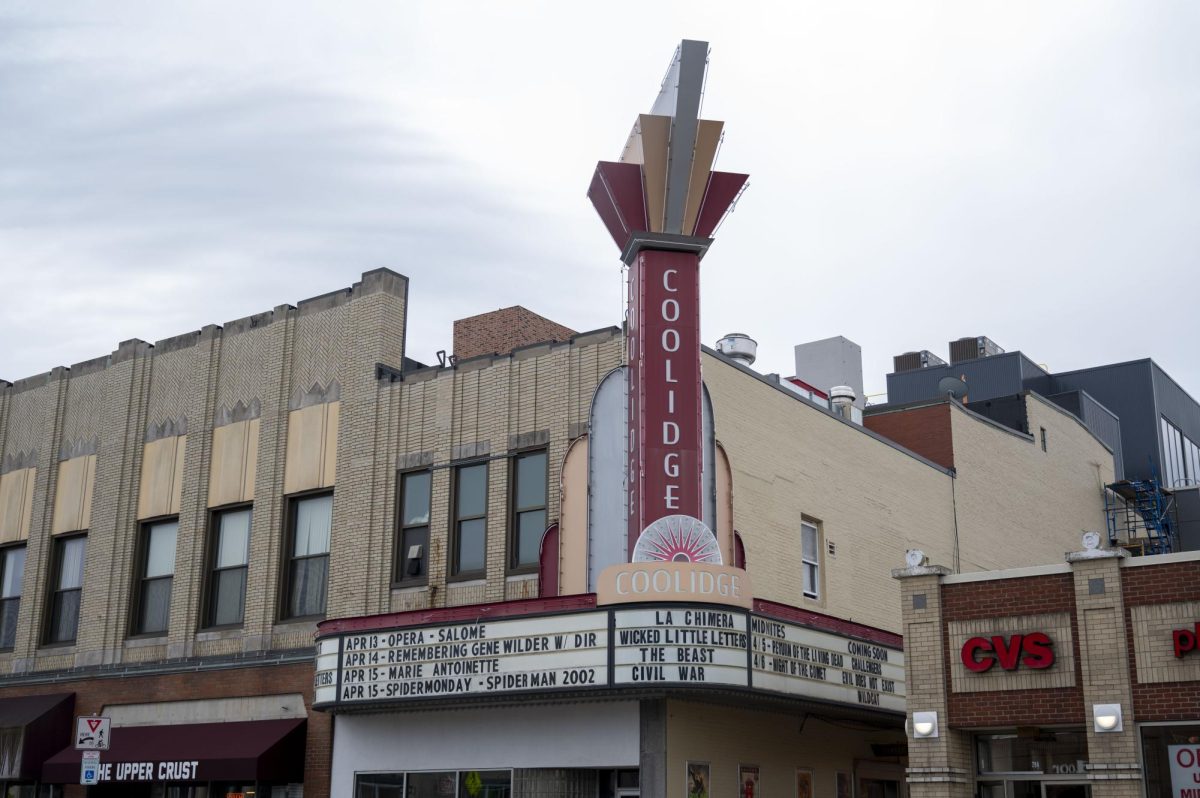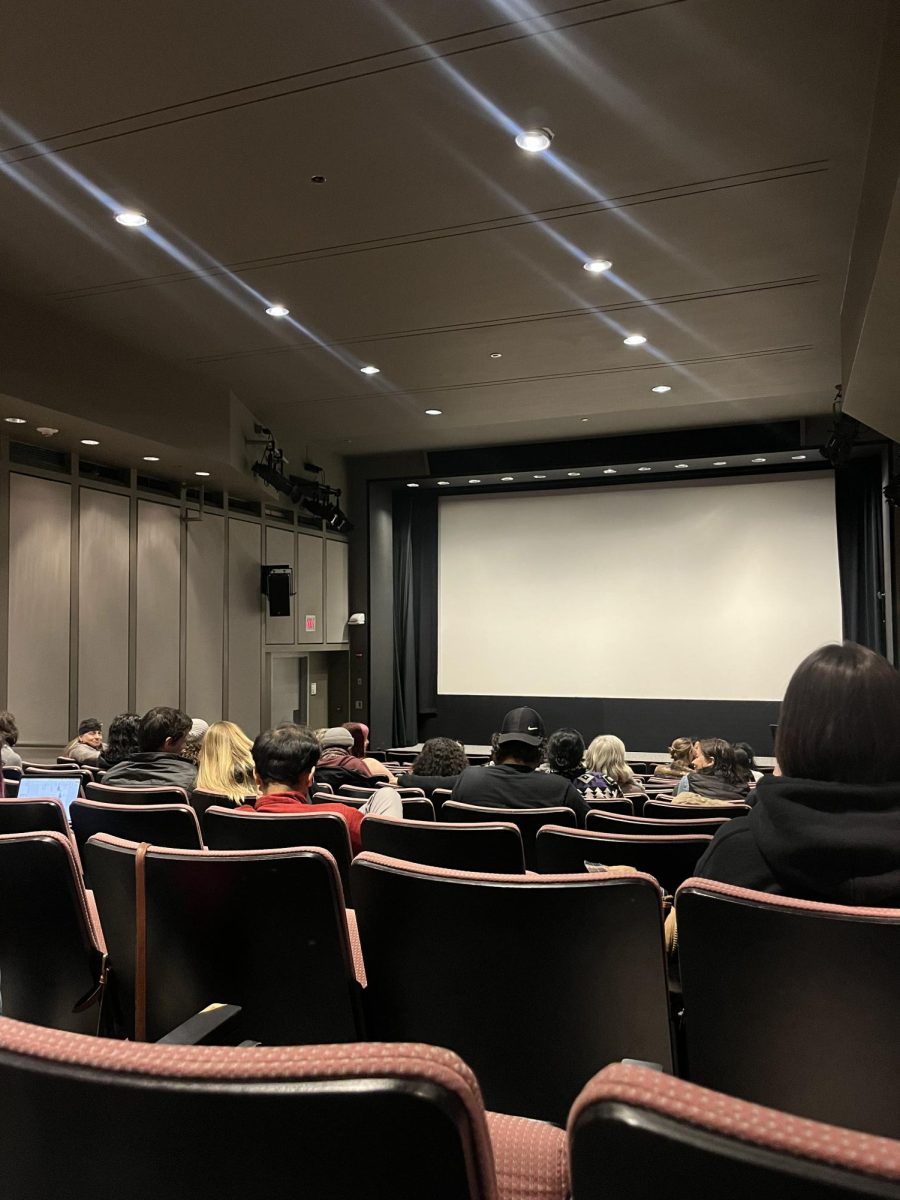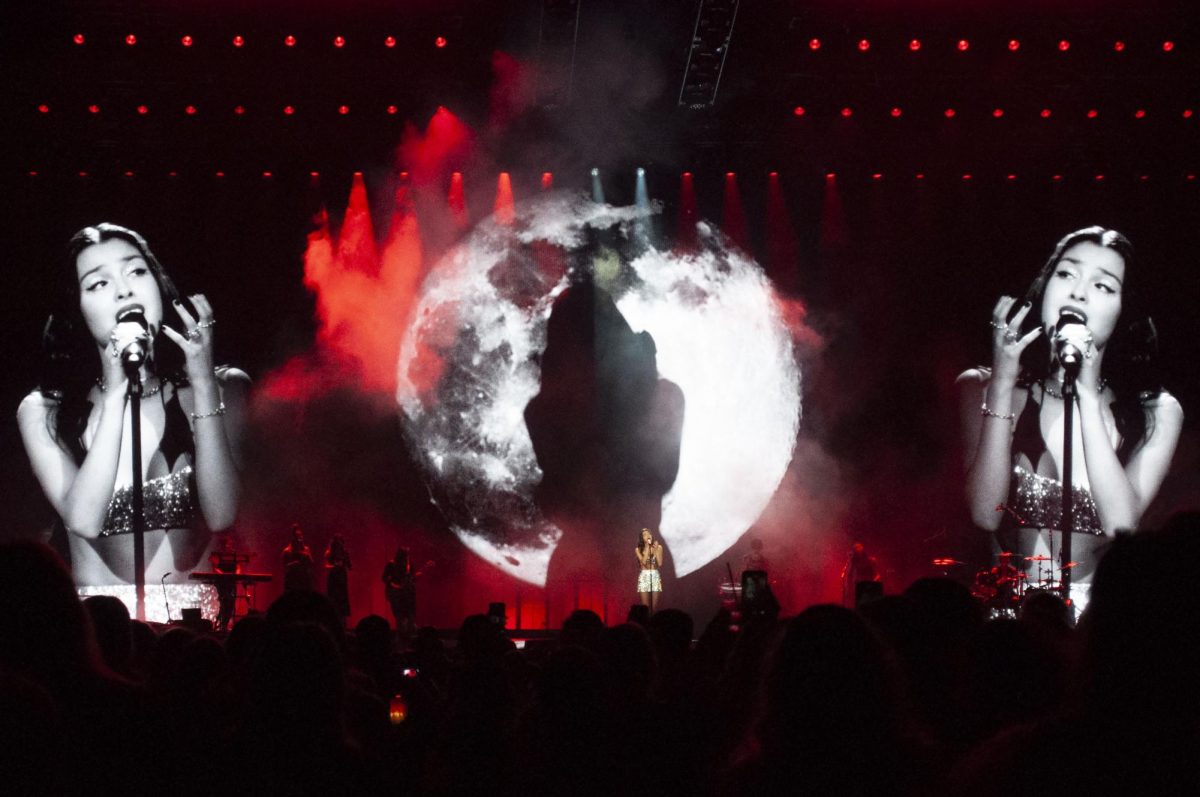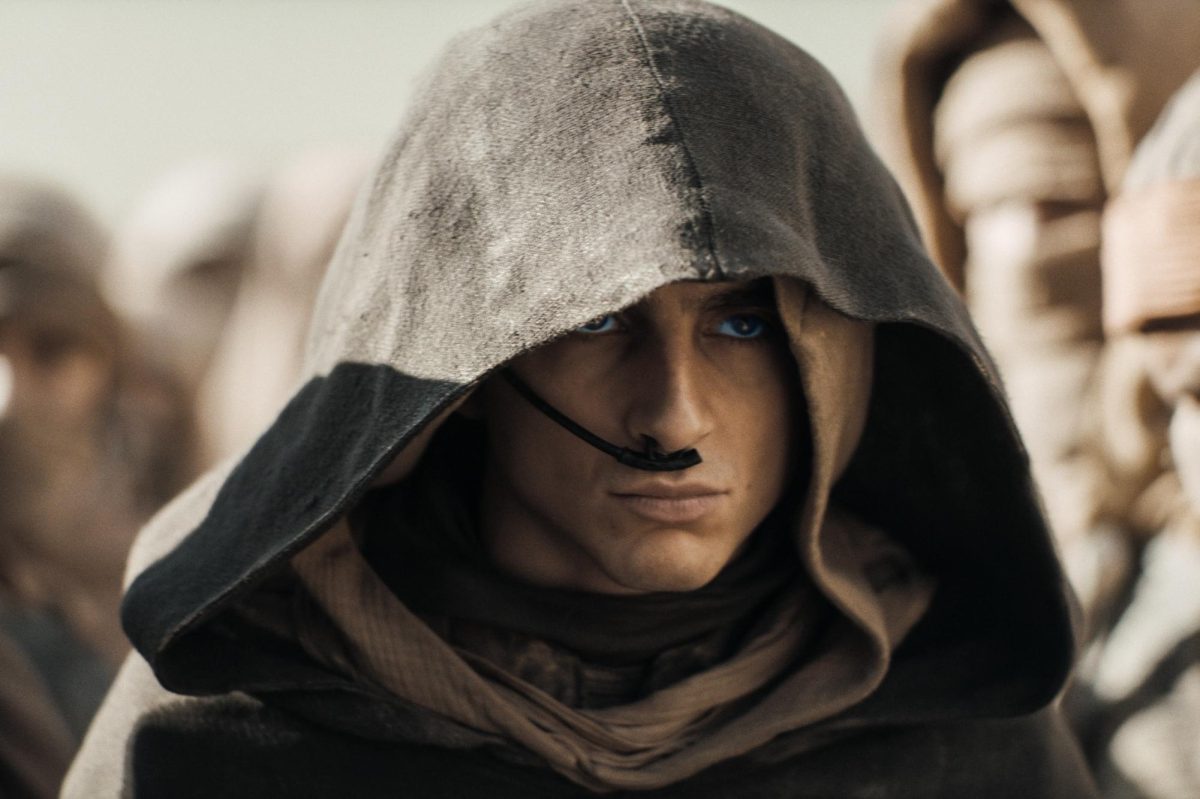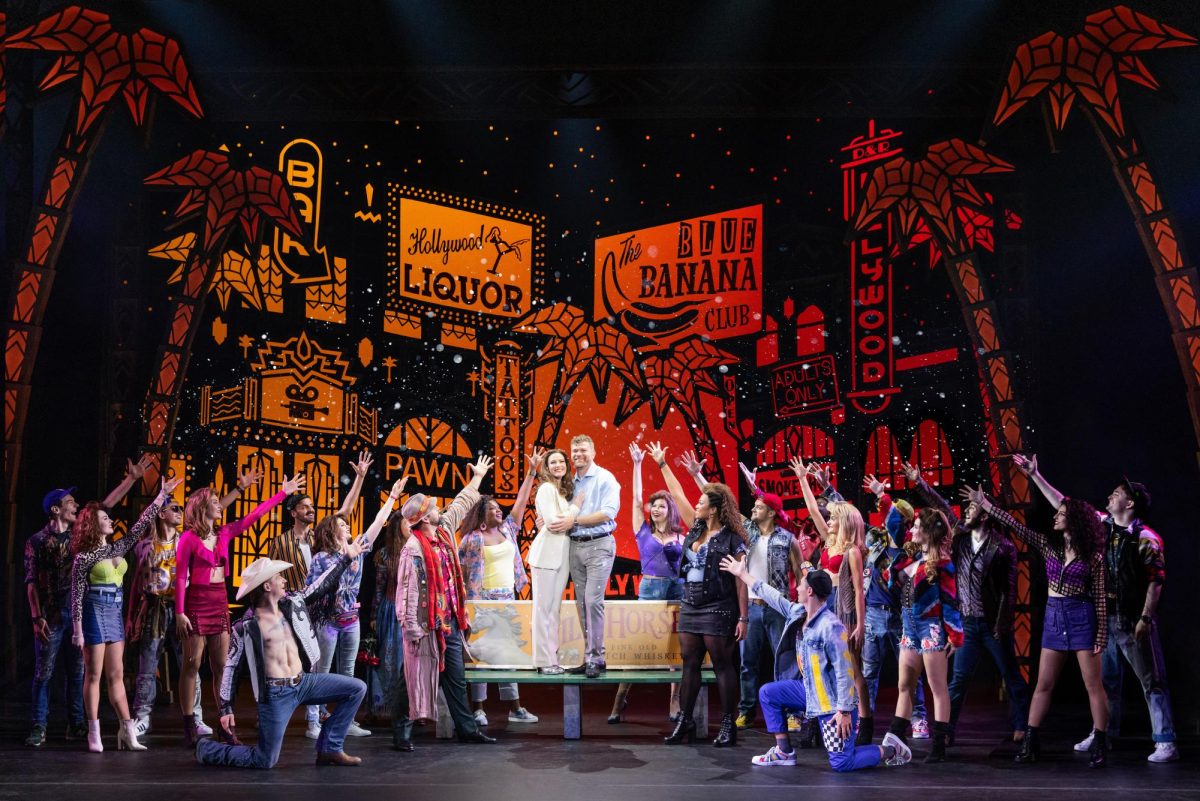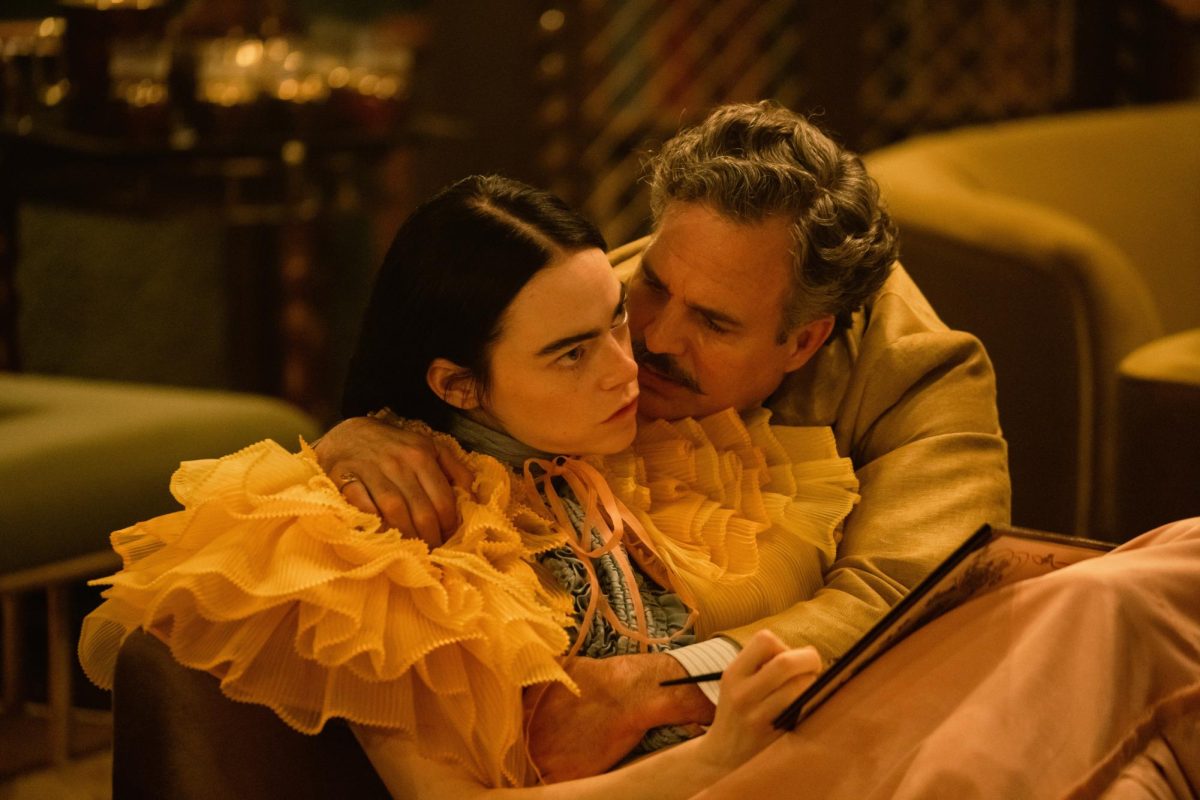By Drew Baldwin, news correspondent
Why was the cast all male in Wayne McGregor’s recent ballet “Obsidian Tear”? Who were the eight men in black? Why were their clothes so vastly “feminine”? And, what is the correct pronunciation of “tear”?
Boston Ballet premiered “Obsidian Tear,” opening alongside “Fifth Symphony of Jean Sibelius,” at the Boston Opera House Nov. 3 and left many questions unanswered. In co-production with the Royal Ballet, Boston Ballet delivered a stunning performance, encompassing the emotional hardship that life often possesses.
The piece opened in silence, as two men — Paulo Arrais and Irlan Silva — wove around each other. Silva was clad in loose red trousers, while Arrais wore black. Then, Esa-Pekka Salonen’s chilling solo violin piece, “Lachen Verlernt,” was played by Christine Vitale, and the bare-chested men gradually moved away from each other.
Could the pairing of the violin, an instrument oftentimes associated with the devil, and Silva’s red trousers, a color also often associated with the devil, draw a theory that Silva himself was a Satanic figure?
As the men danced together again, their bodies closed in on each other but did not physically connect. Their faces almost met, and their hands almost touched. Finally, when Arrais and Silva did touch, it was chilling. Silva fell to the floor and Arrais traced all the way down his curved spine with a pointed toe.
The rest of the cast then moved in. There were nine men, dressed in black with the exception of Silva. Their garments were vastly feminine, as one wore a tight shirt with a faint outline of a bra, another in a bandeau. All of the dancers were in clothes that flowed and curved with them as they danced, possibly symbolizing the gracefulness and fullness of women.
Silva himself was striking against the eight other men. One minute he would seem to be ripping himself apart — at one point, he was slashed across the chest with black ash — and the next minute, he would be serene and slow, moving in a peaceful trance.
The men seemed to move as an entity but later broke off into groups, tearing or pulling at Silva as he danced on the outskirts. All their moves mirrored each other but in separate spots on the stage, creating a sense of fluidity as well as a feeling of disconnect. Then, Silva was lifted and thrown off the stage into a black pit. The reason for his possible death is still unclear.
After this, the story becomes vague and uncertain. “Obsidian Tear” continues to hold true to its mystery and delicacy, but the storyline itself blurs as Arrais holds his own in an eerie solo. As if it’s all too much for him, Arrais throws himself into the black pit, following Silva. One can’t help but wonder if McGregor is generating a connection to Lev Ivanov’s “Swan Lake.”
“Obsidian Tear” was resonating. Although it’s still unclear what the core focus of the ballet was, McGregor choreographed a performance that was capable of physically moving the audience. Heads throughout the Opera House tilted as dancers moved across the stage, attempting to grasp what was happening before their eyes.
What was clear was that McGregor wanted to make people think. “Obsidian Tear” was a beautiful piece of social commentary that illuminated one’s mind with a flurry of thoughts and theories that forced conversation. His revolutionary performance included topics ranging from what it means to be an outsider, to the roles of gender in a society, all while bringing his audience on a breathtaking journey through the diverse meanings of life.







